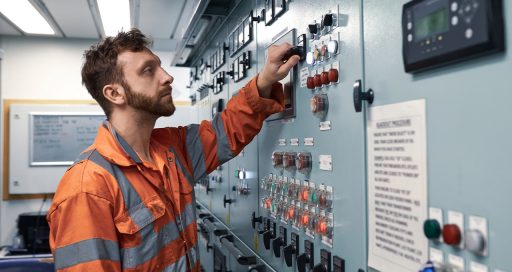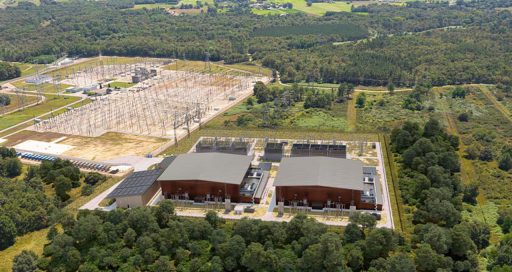The Organisation for Economic Co-operation and Development (OECD) provides some answers to this question in its latest report OECD Employment Outlook 2024: The Net-Zero Transition and the Labour Market. According to the report, climate transition is likely to cause major long-term upheaval in employment. Andrea Bassanini, Senior Economist at the OECD and Chief Editor of the report, explains in more detail.

Which sectors will be most powerfully affected by the transition toward carbon neutrality?
Andrea Bassanini: If we focus on the 2050 net zero target, several sectors with intensive greenhouse gas emissions are still a long way off, starting with agriculture, and livestock farming in particular.
And of course, activities that rely heavily on the production and consumption of fossil energies are also on the front line. Heavy industry (metalworking, chemicals, paper, etc.) is the most affected. For this sector, if planned climate policies are kept up, every model calls for job cuts in the order of 14% by 2030, on average.
The alternatives and “green” solutions for powering heavy industry – such as reassigning gas and oil pipelines to the transportation of green energy like hydrogen, or the development of SMRs (mini nuclear reactors) – are not feasible in the medium term, and are often difficult to implement where production sites are located.
Which other sectors are in the firing line?
A.B.: Transport is also affected. If the net zero emissions target for 2050 is met, the air transportation and maritime sectors are highly likely to see strong pressures on jobs, because the solutions to help them make the technological leap required to achieve carbon neutrality currently remain hypothetical.
In the automotive industry specifically, the electrification of vehicle stocks points to a reduction in the labour force, because the production process for an electric motor involves fewer tasks than for a thermal engine.
On the other hand, other highly emitting activities such as construction or recycling will probably not see their workforces shrink, as the needs for infrastructure and waste recovery are only going to increase.
What is the current proportion of people working in sectors with high greenhouse gas emissions?
A.B.: The sectors with the biggest impact – heavy industry, construction, transport, extractive industry and agriculture – which between them produce 90% of all greenhouse gas emissions, represent just 7% of jobs.
The social impact may seem minimal. But the problem is that this impact is concentrated in a handful of sectors and just a few geographical regions, such as Silesia in Poland or the Rust Belt in the USA. The cost of this contraction in employment is actually extremely high. When an entire sector disintegrates, it is difficult to transfer all the jobs affected into other activities. Also, employees in these sectors, often strongly unionised and fairly well paid, after being laid off, have to reconcile themselves to lower incomes for jobs at the same level of qualification.
Conversely, professions buoyed by the ecological transition, which represent 20% of total jobs, such as engineers specialised in renewable energies, and experts in logistics or forest restoration, along with jobs in construction or energy distribution, will only see a sliver of the positive impact from this ecological shift, because the effects on employment will be diluted across many more sectors and professions.
Professions buoyed by the ecological transition represent 20% of total jobs.
How can transition and professional retraining policies mitigate the impact on employees in the sectors most affected by ecological transition?
A.B.: These policies play an essential role. With qualified personnel, it is important to provide support to help them identify business areas in which to pursue their careers. But at the moment, too few public and private stakeholders are anticipating the effects of the policies in place for achieving carbon neutrality or preparing professional retraining.
With unqualified personnel, the task is even more challenging, because you need to provide specific training programmes. Often, the training component is managed by a country’s ministry of employment, while ecological transition policy is implemented by the ministry for the environment. And there is insufficient coordination between the two.
What role should public authorities play in professional retraining?
A.B.: There should be more incentives. We could design financial aid systems to compensate the loss of income following retraining linked to ecological transition, like what the United States did with RTAA (Reemployment Trade Adjustment Assistance), created in 1962 and then relaunched in 2009 to cushion the effects of globalisation.
The American experience showed that the cost of these solutions was quickly offset by a reduction in unemployment benefit, reduced investment in social support, and increased tax revenues. Of course, this type of aid must be time-limited, with businesses then stepping up and increasing their new employees’ salaries.
Do you think that many countries are sufficiently prepared for this change in the jobs market?
A.B.: They all have the means to respond to this change. They know the government policies in place, and therefore, the measures they need to take to achieve the objectives set out in those policies. But that requires big investments. And the effects of whatever they decide to do will only be seen in 10 or 15 years’ time. That’s a long way off in terms of the political agenda. But the cost of climate inaction is huge, if not ultimately untenable. In purely economic and financial terms, it would be more cost-effective to borrow, for example, to finance this ecological transformation.
15/03/2025





